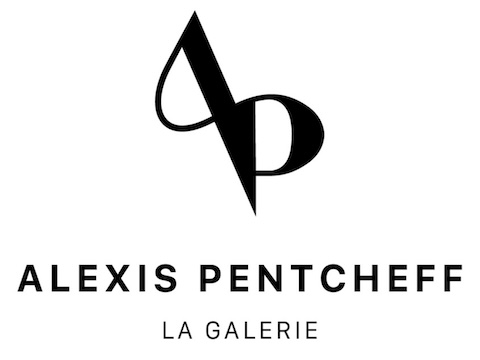Félix Ziem was born in Beaune in 1821. In 1833, his family moved to Dijon and the young Ziem is is placed in apprenticeship with an architect friend of the family. His mother died shortly after.
He obtained a departmental grant which allowed him to enroll in the Beaux-Arts de Dijon in the architecture section, but his indiscipline was soon severely sanctioned and he was excluded from the school.
Deeply disappointed that he could not continue his apprenticeship in Paris, Ziem left Dijon to join his half-brother François, a commercial broker in Marseille. He was then hired as a works supervisor at the shipyard of the canal of Marseille. He took the opportunity to make many sketches and watercolors of the Roquefavour canal. In 1839, the Duke of Orleans, visiting the region for the inauguration of the Palais Longchamp, commissioned a series of drawings. Encouraged by this success, Ziem opened a studio near the port, where he taught watercolor and drawing to many students in private classes, while he himself took private classes from Aubert. He produced his first oil paintings, encouraged in particular by Emile Loubon (director of the Ecole des Beaux-Arts de Marseille) and Gustave Ricard. Many wealthy Marseilles residents, including the industrialist and shipowner Jules Charles-Roux, began to take an interest in his work and to buy his paintings.
His career was launched.
After the one in Marseille, his financial situation allowed him to acquire several other studios in Nice, Barbizon, Paris and Martigues, between which he divided his time in permanent return trips. In Montmartre, rue Lepic, the garden of his studio is cluttered with souvenirs of his travels, arranged in the manner of a theater set... In Martigues, the studio is built on the plans of a mosque. Ziem, an affabulator and facetious, likes to dress up, does not hesitate to lead his biographers to improbable tracks.
Ziem's life was marked by incessant travel; Italy and the Orient particularly inspired him. It was in 1842 that he discovered Italy for the first time: Genoa, Florence, Rome, Bologna and of course Venice, which he reached by boat. Between June 1843 and September 1844, Ziem was in Russia. This stay was under the protection of Prince and Princess Gagarin, whom he had met in Baden-Baden on his return from Italy. Berditcheff, Baranovka, Kiev, Moscow, Saint Petersburg, the Neva... In the entourage of the Prince and the aristocracy, his business prospered. However, Russia did not inspire him much and this worldly life began to weary him; he hastened his return to France, after a stopover in Copenhagen. Between 1846 and 1848, Ziem was again in Italy. With his friends, the painter Arminius Mayer and his wife, he stayed at Lake Como, and for a longer period in Florence. He then went to Bologna, Imola and Venice, where he bought a flat-bottomed boat which he converted into a studio. Padua, Vesuvius and the Bay of Naples were the last stops on this long trip.
During the following years, the painter crossed Flanders, lingering in Bruges, Ghent, Antwerp and Amsterdam. In 1856, he finally pushed open the doors to the Orient. He was in Constantinople from July to August, then went to Egypt, Beirut and Damascus. The return journey was punctuated by several stopovers in Greece and Sicily. Between 1860 and 1885, the artist made several visits to Venice, irrevocably attracted by the city that never ceased to animate his brushes.
Ziem died in 1911, at the age of 90 and filled with honors. An important posthumous donation of the master's works was made to the city of Martigues, thus respecting the artist's wishes.

Provençal Painters
8 October 2022 - 22 October 2022

Petits et grands voyages
12 January 2013 - 21 February 2013



